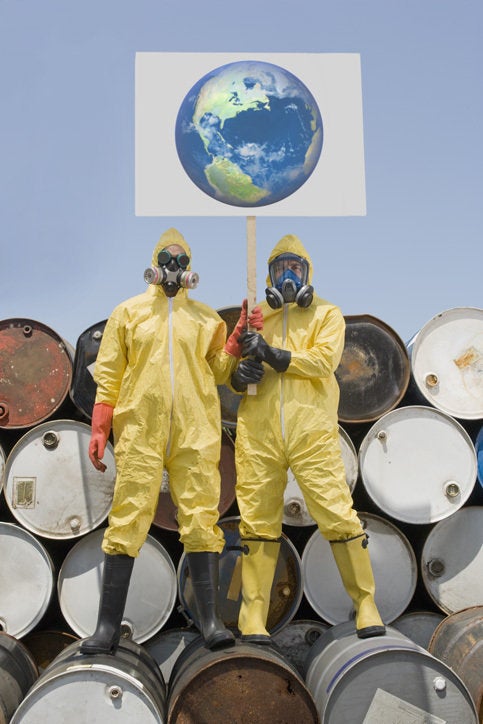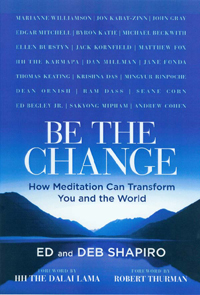
There
is a lot of anger on our streets these days, against healthcare, racism and Afghanistan, which made us consider what is most effective: resistance or
pacificsm? Activism is dedicated to fighting injustice and bringing about
social change, but is angry activism really effective? Is activism different if
it arises out of a contemplative and compassionate response rather than an irate
reaction?
"Back in the eighties, I was an activist for a bunch of different
organizations, but I was a horrible activist because all I did was project my
rage," yoga teacher Seane Corn told us. "I was the one with a soapbox
and mega phone telling everyone how to live their lives. But it didn’t serve anything.
Rage just pushes away; it is a threatening energy that alienates, but the world
changes by embracing, not by pushing away.";
The
fire of fury may stimulate our motivation, but it cannot keep us going for long
as anger depletes. Exhaustion is the inevitable downside. As Insight Meditation
teacher Joseph Goldstein says: “For many years, I taught many retreats for
environmental and social activists and one of the major issues for people who
are engaged in such action, often in the front lines of conflict, is energy
burn-out. This is because the work is often fueled by anger at conditions of
inequity and injustice, but anger is unsustainable. It is a motivation that
literally burns us up. Compassion is a much more sustainable energy. It can
motivate a lifetime of active social engagement.”
Where
anger may be an initial motivation for protest, it does not often bring about
the changes that are desired. Rather, it invariably creates more negativity.
Anger is exclusive and calls for further exclusivity, rather than being
inclusive and, therefore, working toward wholeness. Conversely, the more we
give, the more we get to give with. There is no time where we run out of
compassion.
Meditation
is essential to this process, as it enables us to see the fruitlessness of
anger. Then activism informs us of when and how best to use anger, rather than
being used by it. Rama Vernon had to learn this lesson when she was dealing
with the KGB:
“There may be moments
when we need to use anger, but it is not the same thing as being angry," Rama told is. "I have
used anger with the KGB, as it was the right thing to do at the time, but I was
responding with anger, not reacting. If we react with anger, it can actually
fuel a situation and we become part of the problem instead of the solution. We
can create change through anger, but we cannot create transformation through
anger. The change will always revert back to something else. Meditation creates
clarity of mind, and when we have clear thinking, our actions are more focused
and we have greater power. If our minds are scattered, then whatever actions we
take will only cause confusion.”
We
usually think of activism as being against
something, whether it be war, torture, or dictatorial government, whereas contemplative
activism is being for something, such
as fairness, freedom, and peace. Being for
something shifts us from maintaining the negative to supporting the positive.
“In my youth, I was
fueled by anger," says international peaceworker Rabia Roberts. "Then I worked with
Martin Luther King in the civil rights movement for three years. What I learned
from King was the beginning of nonviolent activism, that we are not here to
defeat or hurt anyone, but to reveal the injustice that exists in the situation
and see if we can come to a greater understanding. Like activism, meditation
wants to reveal the reality behind the illusion. You begin to realize soldiers
are not necessarily heroes but are victims. In the nonviolent worldview, there
is no blame; you can hold someone accountable but there is no blame for what is
happening. If you are full of aggression and agitation, all you are doing is
adding that negativity to the mix. That is why war cannot bring peace.”
Meditation
is also essential as it expands our awareness beyond our self-centered view. “First
yoga changed my body; then meditation changed my attitude," continued
Seane, who is featured in our book, BE THE CHANGE, below. "Then I realized
that whether my practice was fifteen minutes or four hours was irrelevant
because it was not about how yoga can change me, but how I, through this
practice, can begin to change the world."
We
would love to hear your comments, below. You can receive notice of our blogs
every Tuesday by checking Become a Fan
at the top.
You
can pre-order a copy of our book at: BE THE CHANGE, How Meditation Can Transform
You and the World. It will be published Nov 3.

****
Ed and Deb Shapiro’s new book, BE
THE CHANGE, How Meditation Can Transform You And The World, forewords
by the Dalai Lama and Robert Thurman, with contributors such as Marianne
Williamson, astronaut Edgar Mitchell, Ellen Burstyn, Michael Beckwith, Jon
Kabat-Zinn, Jane Fonda, Jack Kornfield, Byron Katie, Seane Corn, Rama Vernon
and Rabia Roberts, will be published Nov 3 2009 by Sterling Ethos.
Deb
is the author of the award-winning book YOUR BODY SPEAKS YOUR MIND. Ed and Deb are the authors of over 15
books, and lead meditation retreats and workshops. They are corporate
consultants, and the creators of Chillout
daily inspirational text messages on Sprint cell phones. See:
www.EdandDebShapiro.com